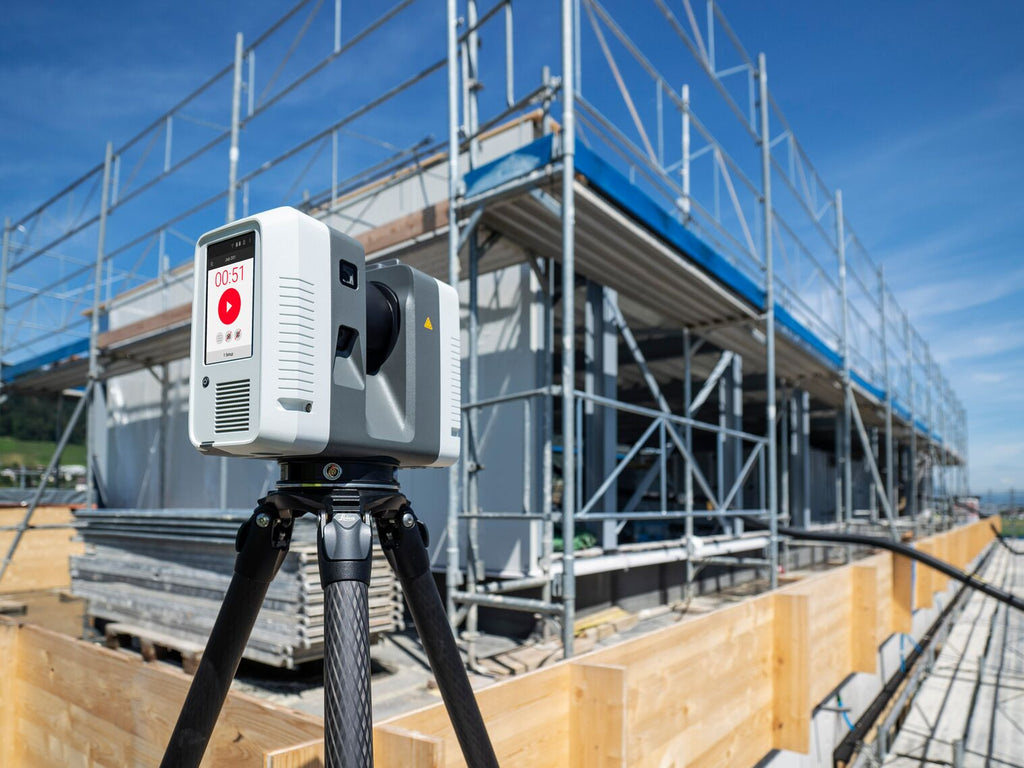3D Scanning in Construction

In the fast-paced world of construction, precision and efficiency are paramount. Every project demands meticulous planning, accurate measurements, and a keen eye for detail. Enter 3D scanning – a revolutionary technology transforming the construction industry from the ground up. In this blog, we'll delve into what 3D scanning is and explore its wide-ranging applications in construction.
What is 3D Scanning?
At its core, 3D scanning is a process that captures the shape, size, and spatial data of physical objects or environments and creates a digital representation of them in three dimensions. This is achieved using specialized hardware, such as laser scanners, and advanced software algorithms.
These scanners emit laser beams onto the surfaces of objects, recording millions of data points to create a highly detailed and accurate 3D model. The resulting digital replica can be manipulated, analyzed, and utilized for various purposes.
Applications in Construction
Site Surveys and As-Built Documentation
One of the primary applications of 3D scanning in construction is conducting comprehensive site surveys and documenting existing structures. Traditional surveying methods often involve manual measurements, which are time-consuming, prone to errors, and may not accurately capture the intricate details of complex structures.
3D scanning streamlines this process by swiftly capturing precise measurements of buildings, landscapes, and infrastructure. This data can create accurate as-built documentation, aiding architects, engineers, and contractors in planning renovations, expansions, or retrofitting projects.

Building Information Modeling (BIM)
Building Information Modeling (BIM) has revolutionized projects' design, construction, and management. 3D scanning is pivotal in the BIM workflow by providing the foundational data needed to create detailed digital models of buildings and infrastructure.
By integrating 3D scan data with BIM software, stakeholders can visualize the project in a virtual environment, identify clashes or discrepancies early in the design phase, and optimize construction processes. This collaborative approach enhances communication among project teams, minimizes rework, and ultimately leads to more efficient project delivery.
Quality Control and Asset Management
Ensuring quality control and managing assets throughout the construction lifecycle are essential for project success and long-term sustainability. 3D scanning enables construction professionals to monitor progress, assess deviations from design specifications, and identify potential issues before they escalate into costly problems.
By conducting regular scans of construction sites, stakeholders can compare the as-built conditions against the original designs, detect discrepancies, and implement corrective measures promptly. Additionally, 3D scanning facilitates asset management by accurately documenting installed components, equipment, and infrastructure, simplifying future maintenance, repairs, and renovations.
Advantages of 3D Scanning in Construction
The adoption of 3D scanning technology offers several advantages to construction firms and project stakeholders:
Accuracy and Precision: 3D scanning captures detailed measurements accurately, minimizing errors and ensuring project integrity.
Time and Cost Savings: By streamlining surveying and documentation processes, 3D scanning reduces labour costs, accelerates project timelines, and minimizes rework.
Enhanced Collaboration: Digital models generated from 3D scan data facilitate better collaboration among architects, engineers, contractors, and clients, improving decision-making and project outcomes.
Safety: 3D scanning reduces the need for manual measurement tasks in hazardous environments, enhancing worker safety on construction sites.
3D scanning revolutionizes the construction industry by providing precise measurements, detailed documentation, and valuable insights throughout the project lifecycle. From site surveys and BIM integration to quality control and asset management, the applications of 3D scanning are vast and transformative. As construction firms embrace innovative technologies, 3D scanning will play a central role in shaping the industry's future, driving efficiency, and delivering exceptional results.
If you're looking for specialized tools and technology for your construction project, we can help. We offer a wide range of 3D laser scanners that can help streamline your surveying, documentation, and modeling processes. Explore our selection of tools today and see how 3D scanning can make your construction project easier and more efficient.
